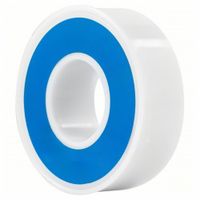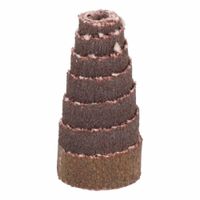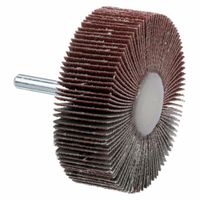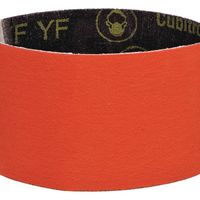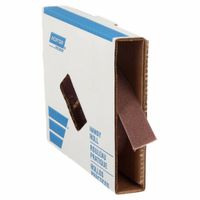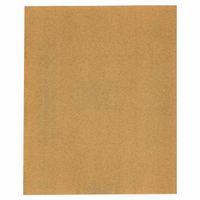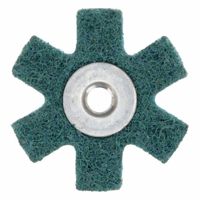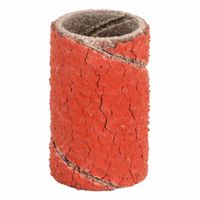Call +(254) 703 030 000 / 751 483 999 / 721 704 777
.....Read More
Frequently Asked Questions
What grit sandpaper should I use for sanding metal?
When sanding metal, the grit of sandpaper you should use depends on the desired outcome. For heavy material removal, rust removal, or shaping metal, a coarser grit between 40-80 is appropriate. If you're preparing the metal for painting or welding, a medium grit between 100-180 will smooth out imperfections. For a fine finish or polishing, especially if you're aiming for a mirror-like shine, you'll want to use finer grits ranging from 220 up to 1000 or even higher. Always start with a coarser grit if there are significant imperfections and progressively move to finer grits until the desired smoothness is achieved. Using water or oil with wet/dry sandpaper can also help achieve a smoother finish and reduce clogging when working with finer grits.
How do I choose the right sanding disc for my project?
Choosing the right sanding disc involves several factors to ensure optimal results and efficiency for your project. First, consider the grit size. Coarse grits (e.g., 40-80) are best for rapid material removal, shaping, or removing heavy coatings like paint or rust. Medium grits (e.g., 100-150) are versatile for general sanding, smoothing imperfections, and preparing surfaces for finishes. Fine grits (e.g., 180-220) are ideal for final smoothing before staining or painting, while very fine grits (240+) are for ultra-smooth finishes or between-coat sanding.
Next, consider the abrasive material. Aluminum oxide is a common and economical choice, suitable for wood, metal, and plastic. Zirconia alumina is tougher and longer-lasting, excellent for aggressive removal on hardwoods and metals. Ceramic abrasives are the most durable and aggressive, perfect for demanding applications on tough materials. Silicon carbide is sharp and brittle, making it good for non-ferrous metals, fiberglass, and wet sanding.
The disc's backing material also matters. Paper backings are common and cost-effective, but can tear. Cloth backings are more durable and flexible, suitable for more aggressive sanding. Film backings offer superior uniformity and tear resistance, great for fine finishing.
Finally, consider the disc's attachment method (hook-and-loop, PSA/pressure sensitive adhesive), and any dust extraction hole patterns if using a sander with dust collection. Matching these to your tool is crucial.
What is the difference between sanding belts and sanding discs?
Sanding belts and sanding discs are both abrasive tools used for smoothing and shaping materials, but they differ significantly in their design, application, and the types of sanders they are used with.
Sanding belts are continuous loops of abrasive material, typically used with belt sanders. These sanders are powerful tools designed for aggressive material removal over large, flat surfaces. The continuous motion of the belt allows for efficient, uniform sanding, making them ideal for tasks such as preparing floorboards, shaping wood, or removing old finishes. Belt sanders excel at rapid stock removal and achieving a consistent finish on expansive areas.
Sanding discs, on the other hand, are circular pieces of abrasive material that attach to disc sanders, orbital sanders, or angle grinders. Disc sanders, especially random orbital sanders, are known for their ability to produce a smoother, swirl-free finish due to their random sanding pattern. They are versatile and widely used for finer finishing work, detail sanding, and preparing surfaces for painting or staining. Angle grinders with sanding discs are often used for more aggressive material removal on metal or concrete, while smaller disc sanders are preferred for woodworking.
In summary, the main difference lies in their form factor and how they are used. Sanding belts are for large-scale, aggressive sanding on flat surfaces, while sanding discs offer greater versatility for finer work, detailed finishing, and a broader range of materials depending on the type of sander used.
How do I prevent swirl marks when sanding wood?
Please tell me what topic you would like me to elaborate on.
What is the best way to sand intricate details on wood?
Please tell me what you would like me to elaborate on.
How do I sand and polish plastic surfaces?
Sanding and polishing plastic surfaces can restore their clarity and smoothness. Start by cleaning the plastic thoroughly. For scratches, begin with a coarser grit sandpaper (e.g., 220-grit) and gradually move to finer grits (400, 600, 800, 1000, 1500, 2000, 2500, and even 3000-grit). Sand in a consistent pattern, changing direction with each finer grit to remove previous scratch marks. Keep the surface wet during wet sanding. After sanding, use a plastic polishing compound with a soft cloth or a buffing wheel on a rotary tool. Apply a small amount of compound and buff the surface until it becomes clear. Finish with a plastic sealant or wax for protection.
What type of abrasive is best for sanding stone?
The best type of abrasive for sanding stone depends on the specific stone and the desired finish. Generally, diamond abrasives are considered the most effective for natural stone due to their hardness and durability. They are available in various forms, including diamond pads, discs, and belts, with different grit sizes for different stages of sanding—from coarse grits for initial shaping and material removal to very fine grits for polishing and achieving a smooth, reflective surface.
Silicon carbide is another common abrasive used for sanding stone, particularly for softer stones or for achieving a matte finish. It is often used in sandpaper or grinding wheels. Aluminum oxide can also be used, though it is generally less aggressive than diamond or silicon carbide. For softer or more delicate stones, sometimes even softer abrasives like pumice or specialized polishing compounds are used to avoid damage and achieve a specific luster.
Ultimately, selecting the best abrasive involves considering the stone's hardness, the amount of material to be removed, and the final desired aesthetic. It's often recommended to start with a coarser grit and gradually move to finer grits to achieve the best results without damaging the stone.
How do I clean and maintain sanding tools and abrasives?
Cleaning and maintaining sanding tools and abrasives is crucial for their longevity and effective performance. For sanding tools, regularly remove dust and debris. Use a brush or compressed air to clean sanders, especially around the motor and ventilation ports, to prevent overheating. Check cords and plugs for damage and ensure all moving parts are lubricated as per manufacturer guidelines.
For abrasives like sandpaper, discs, or belts, cleaning can extend their life. For dry sanding abrasives, a cleaning stick (also called a "sandpaper cleaning stick" or "abrasive cleaning block") can remove clogged dust and resin, exposing fresh grit. Simply press the cleaning stick against the moving abrasive. For wet sanding abrasives, rinse them thoroughly with water to remove slurry and allow them to dry completely before storage to prevent mildew or rust on tools.
Store sanding tools and abrasives in a clean, dry environment away from extreme temperatures and humidity. Keep abrasives flat to prevent warping. Proper maintenance not only ensures better results but also saves money by prolonging the life of your equipment and supplies.
What safety precautions should I take when sanding?
Please specify the topic you would like me to elaborate on.
How do I achieve a smooth finish on composite materials?
To achieve a smooth finish on composite materials, several steps are crucial. First, proper mold preparation is essential. The mold surface should be highly polished and treated with a release agent to prevent sticking and ensure a clean demolding process. During lamination, ensure uniform resin distribution and minimize air entrapment by using a vacuum bagging system or rollers to consolidate the layers. Once the composite is cured, initial sanding with progressively finer grits (e.g., 180-grit to 400-grit) helps to remove imperfections and level the surface. For a truly smooth finish, wet sanding with even finer grits (e.g., 600-grit to 2000-grit or higher) is recommended. After sanding, polishing compounds and buffing wheels can be used to bring out a high-gloss shine. For specific applications, a clear coat or gel coat can be applied as a final protective and aesthetic layer. The choice of materials (resin, reinforcement), curing conditions, and application techniques all play a significant role in the final surface quality.
